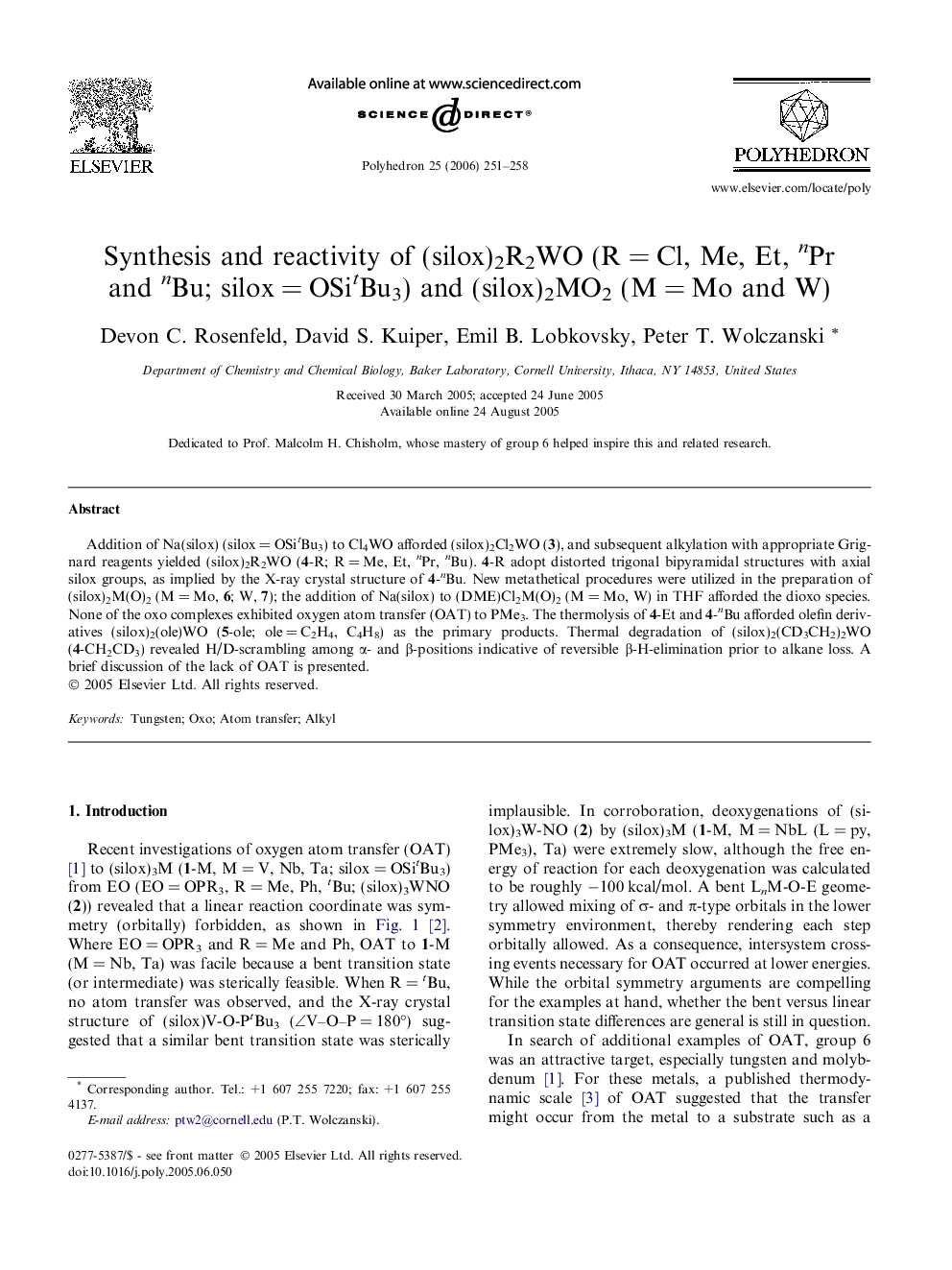| Article ID | Journal | Published Year | Pages | File Type |
|---|---|---|---|---|
| 1341003 | Polyhedron | 2006 | 8 Pages |
Addition of Na(silox) (silox = OSitBu3) to Cl4WO afforded (silox)2Cl2WO (3), and subsequent alkylation with appropriate Grignard reagents yielded (silox)2R2WO (4-R; R = Me, Et, nPr, nBu). 4-R adopt distorted trigonal bipyramidal structures with axial silox groups, as implied by the X-ray crystal structure of 4-nBu. New metathetical procedures were utilized in the preparation of (silox)2M(O)2 (M = Mo, 6; W, 7); the addition of Na(silox) to (DME)Cl2M(O)2 (M = Mo, W) in THF afforded the dioxo species. None of the oxo complexes exhibited oxygen atom transfer (OAT) to PMe3. The thermolysis of 4-Et and 4-nBu afforded olefin derivatives (silox)2(ole)WO (5-ole; ole = C2H4, C4H8) as the primary products. Thermal degradation of (silox)2(CD3CH2)2WO (4-CH2CD3) revealed H/D-scrambling among α- and β-positions indicative of reversible β-H-elimination prior to alkane loss. A brief discussion of the lack of OAT is presented.
Graphical abstractThe lack of oxygen atom transfer from (silox)2R2WO (4-R, R = Me, Et, nPr, nBu; R = Cl, 3) and (silox)2M(O)2 (M = Mo, 6; W, 7) may be a consequence of orbital symmetry constraints.Figure optionsDownload full-size imageDownload as PowerPoint slide
